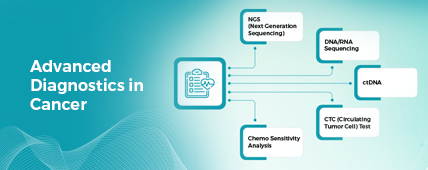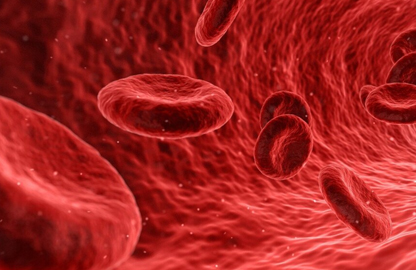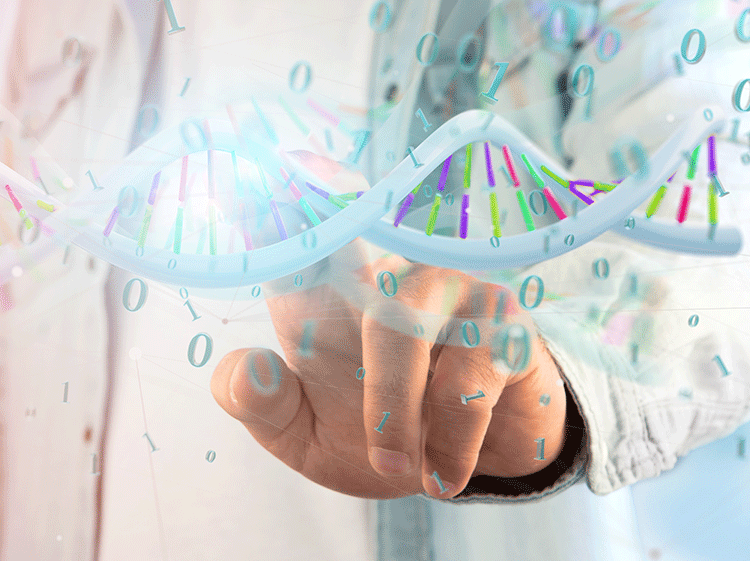

The Next Generation Sequencing Test can be used to test for many different types of cancer, including breast, lung, and colon cancer. It can also be used to guide treatment decisions for patients with metastatic disease, who have tumors that have spread to other parts of the body.
Next Generation Sequencing (Primarily DNA Based)
The Next Generation Sequencing Test is a powerful tool that can help you determine the best course of action for your cancer treatment. This test can provide your doctor with critical information about the specific genetic makeup of your tumor, which can help guide treatment decisions.
Next generation sequencing (NGS) is a newer type of DNA sequencing technology that allows us to sequence large amounts of DNA much faster and more cheaply than traditional methods. This means that we can now sequence an entire human genome in just a few days, whereas it used to take months or even years.
NGS has already revolutionized cancer research and diagnostics, and is now beginning to impact clinical care. The use of NGS to guide cancer treatment is known as precision medicine.
Precision medicine is an approach to disease treatment that takes into account the unique genetic makeup of each patient. By understanding the specific mutations that are driving a patient’s cancer, we can tailor treatments to target those mutations and potentially improve outcomes.
RNA/Transcriptome Sequencing
RNA sequencing, also known as RNA-Seq, is a powerful tool used to study gene expression. RNA-Seq can be used to detect both known and unknown genes, making it an important tool for cancer research. By sequencing the RNA of cancer cells, researchers can better understand the gene changes that contribute to cancer development and progression. This knowledge can then be used to develop more effective treatments for cancer patients.
RNA sequencing offers many advantages over other methods of gene expression analysis like NGS. One key advantage is its high sensitivity, which allows for the detection of even small changes in gene expression. Additionally, RNA-Seq is not biased by sample size or composition, making it ideal for studying rare cell types or small tissue samples.

WE, AT ART OF HEALING CANCER, ARE EXPERTS IN MAKING HIGHLY ACCURATE DIAGNOSES ON THE BASIS OF PERIPHERAL SMEAR EXAMINATION AND BONE MARROW FINDINGS

Ct DNA
Circulating tumor DNA (ctDNA) is DNA that is shed from cancer cells into the bloodstream. ctDNA can be used to detect cancer at an early stage, even before symptoms appear. These tests use a blood sample to look for small pieces of cancer cells’ genetic material, called DNA.
Healthy cells and cancer cells discard pieces or break apart as part of the natural process of growing and dying. These pieces of cells make their way into the blood so that the body can dispose of them. Special tests look for these cell pieces in a sample of blood.
In people with cancer, these tests are sometimes used to understand the DNA changes present in the cancer cells. A health care provider uses the results to select the best treatment.
Some common tests done through ctDNA are:
- Cancer types: Chronic myeloid leukemia, acute lymphoblastic leukemia, and acute myelogenous leukemia
- What’s analyzed: Blood or bone marrow
- How used: To confirm diagnosis, predict response to targeted therapy, help determine treatment, and monitor disease status
- Cancer types: Gastrointestinal stromal tumor, mucosal melanoma, acute myeloid leukemia, and mast cell disease
- What’s analyzed: Tumor, blood, or bone marrow
- How used: To help in diagnosis and to help determine treatment
- Cancer type: Chronic lymphocytic leukemia
- What’s analyzed: Blood
- How used: To help determine treatment
- Cancer types: Breast, colorectal, gastric, and pancreatic cancers
- What’s analyzed: Blood
- How used: To predict the risk of a toxic reaction to 5-fluorouracil therapy
- Cancer type: Acute myeloid leukemia
- What’s analyzed: Blood
- How used: To help determine treatment
- Cancer type: Certain types of leukemia
- What’s analyzed: Blood and bone marrow
- How used: To help in diagnosis
- Cancer type: Acute promyelocytic leukemia (APL)
- What’s analyzed: Blood and bone marrow
- How used: To diagnose APL, to predict response to all-trans-retinoic acid or arsenic trioxide therapy, to assess effectiveness of therapy, to monitor minimal residual disease, and to predict early relapse

The isolation and detection of CTCs plays an important role as a diagnostic, prognostic and therapeutic implications.
CTC’s have clinical uses in the following:
Risk
stratification
Early detection and diagnosis of various cancers
Early detection of relapse/ recurrence
Monitoring the response to treatment
Evaluation of treatment efficacy
Circulating tumor cells (CTCs) have been found in the patients with various forms of metastatic carcinomas.
CTCs are cancer cells originated from solid tumor dispersed in the peripheral blood. It is generally explained that these cells are detached from the primary or secondary tumors of patients with advanced cancer prior to detection in the blood circulation. CTCs number is considered very less, with an estimated number of one in 100 million to one in a billion blood cells.
Scientists have discovered a test that can revolutionize the way doctors evaluate and treat a cancer patient. This technology involves the detection and genetic assay of circulating tumor cells in the bloodstream. Understanding circulating tumor cells is critically important since it is the spread of cancer to other parts of the body—and not the primary cancer—that is often responsible for the death of a person with cancer.
Here, we’ll examine circulating tumor cell and the great potential this technology offers to advance the medical approach to cancer. The basic circulating tumor cell (CTC) tests will provide important data as it relates to how an individual’s cancer is treated.
Art of Healing Cancer partners with RGCC International GmbH for detecting early signs of developing cancer by monitoring of existing cancer. It helps in taking decision for Adjuvant chemotherapy Prognosis – providing information about the risk of recurrence and relapse cases. A more advanced test of the CTC test is also available by providing one’s blood to RGCC laboratory, where a genetic analysis is performed to identify the expression of therapeutic targets, drug sensitivity (Chemosensitivity) and chemo-resistance markers unique to an individual’s circulating tumor cells leading to personalised cancer treatment.
What Works for One Does Not Work for All
What Works for One Does Not Work for All
The isolation and detection of CTCs plays an important role as a diagnostic, prognostic and therapeutic implications…
CTC’s have clinical uses
- Viability testing of Chemotherapy drugs
- Genetic profiling for guidance about targeted therapies Eg. Monoclonal antibodies.
- Viability testing (and identification of action ) of natural substance which may be used as part of a complementary treatment strategy
- To determine risk stratification

For most solid tumors, as few as four out of every 10 patients will respond to the accepted, standard treatment regimens. If you are in the 60 percent of patients for whom first-line treatments will not work, you are forced to undergo additional cycles of therapy in an attempt to identify viable options. When this occurs, you incur higher cost and elevated toxicity. But, most importantly, you lose valuable time—a cancer patient’s most precious possession.
We believe that you are unique, your cancer is unique and your treatment should be too. By applying the results of assays offered at R.G.C.C GENLAB, we can determine the drug or combinations that will most effectively treat your cancer.
Onconomics Plus is a specialized chemosensitivity test which was developed by R.G.C.C.GENLAB, use a patient’s own tumour cells (CIRCULATING TUMOUR CELLS) in the laboratory to identify which drugs have the most as well as the least potential for treating the patient’s unique cancer. This information can increase the success of chemotherapy and reduce unnecessary toxicity.
“Using this test helps oncologists take the possible drug out of chemo selection, increasing the likelihood of successful treatment, and reducing unnecessary toxic side effects by avoiding chemos that would not work” says Dr.Ioannis Papasitiriou, MD of R.G.C.C. GENLAB.
Onconomics assays are being used by many cancer centres all over the world to guide treatment. Onconomics assays are used routinely in selecting second line chemotherapy for ovarian, lung, breast, colon, prostate, cervical cancers as well as sarcomas.
Different assays use different methods to get results. Onconomics uses one of the most advanced technologies to measure cell death. It gives precise and accurate information for identifying resistant drugs and sensitive agents. R.G.C.C. GENLAB IS ACCREDITED WITH ISO CERTIFICATION (ISO:17025)
WHO ARE THESE TESTS FOR?
- People who want to actively engage in reducing their risk of developing cancer in the future.
- People with an increased risk of cancer Eg. Due to family history or life style/ environmental issues who want the opportunity to engage in a screening program in early detection of cancer.
- People with a current diagnosis of cancer who want more information about treatment options for them as an individual-including natural treatments.
Existing drug sensitivity assays have been extensively documented to be capable of placing drugs into the following general categories:
- Drugs which have virtually no chance of working.
- Drugs which have a lower than expected chance of working.
- Drugs which have an average chance of working (in line with clinical expectations before the assays were performed).
- Drugs which have a higher than expected chance of working